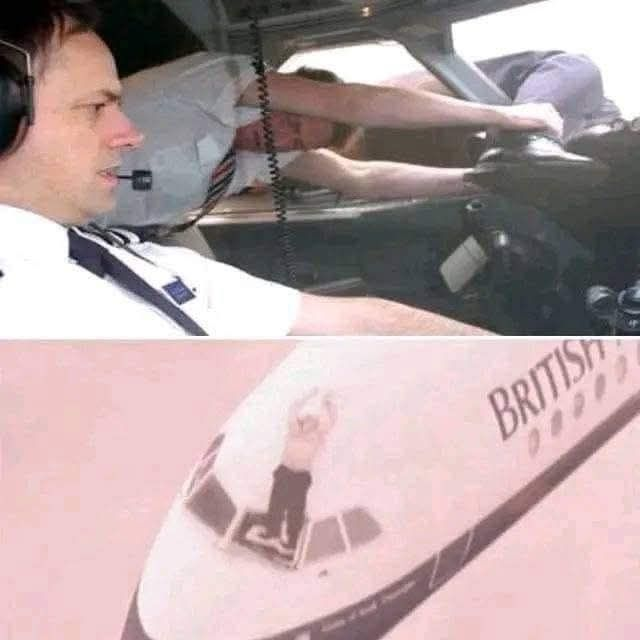British Airways Flight 5390: The Day a Captain Was Sucked Out of the Cockpit at 17,000 Feet
On June 10, 1990, passengers aboard British Airways Flight 5390 from Birmingham to Málaga settled in for what was supposed to be a routine two-hour journey. The skies were clear, the plane was well-maintained, and nothing suggested the chaos that was about to unfold.
A Routine Flight Turns to Terror
The BAC One-Eleven aircraft, carrying 81 passengers and six crew members, had just reached its cruising altitude of 17,300 feet when disaster struck. Suddenly, with a deafening bang, one of the cockpit windows blew out. The cabin depressurized instantly, and hurricane-force winds ripped through the cockpit.
Captain Tim Lancaster, who had been at the controls, was sucked out of the window. His upper body dangled outside the aircraft while his legs and ankles caught on the flight controls, leaving him pinned halfway out of the plane.

The violent rush of air made communication nearly impossible. The cockpit door had blown open, slamming against the control panel, and papers flew everywhere. The freezing cold and ear-splitting noise created an atmosphere of panic — but the crew knew they had to act fast.
A Flight Attendant’s Unthinkable Task
Cabin crew member Nigel Ogden, who had entered the cockpit moments earlier, leapt forward without hesitation. He grabbed hold of the captain’s belt and legs, clinging desperately as the slipstream threatened to tear the captain’s body completely free. Ogden later described the terrifying scene: the captain’s face was being battered by the wind, his skin turning a shocking shade of blue, his body violently trembling against the outside of the fuselage.
Another flight attendant, John Heward, soon joined the struggle, helping Ogden keep hold of Lancaster’s legs. The physical strain was overwhelming, but neither man let go.
First Officer’s Race Against Time
Inside the cockpit, First Officer Alastair Atchison had no choice but to take control. With his captain pinned outside the window and the crew barely able to hold on, Atchison had to descend rapidly to an altitude where passengers could breathe. He battled the violent winds, the rattling controls, and the chaos around him to stabilize the aircraft.
Despite the catastrophic situation, Atchison kept calm. He radioed air traffic control and declared an emergency. Controllers guided him toward Southampton Airport, the nearest runway capable of handling the stricken jet.
Miraculous Survival
For nearly 20 minutes, Ogden and Heward held onto Lancaster’s body, convinced he was already dead but refusing to let go. They feared his body might strike the wing or engine if it slipped free, causing even greater danger.
When Atchison finally landed the aircraft, emergency crews rushed aboard — and against all odds, Captain Tim Lancaster was still alive. He had suffered frostbite, fractures, and bruises, but he survived an ordeal that should have been fatal.
The Cause of the Disaster
Investigators later discovered that the cockpit window had been replaced just before the flight, but the wrong bolts had been used. Instead of using bolts with the correct diameter, engineers had mistakenly installed slightly smaller ones. The error went unnoticed during inspection, and the faulty window gave way under the pressure of high altitude.
Legacy of Flight 5390
The story of British Airways Flight 5390 has gone down in history as one of aviation’s most dramatic survival tales. It highlights not only the importance of strict maintenance checks but also the extraordinary courage of crew members who refused to give up.
Nigel Ogden’s quick thinking and refusal to let go of his captain, First Officer Atchison’s steady hands under unimaginable pressure, and the combined efforts of the entire crew turned a potential mass tragedy into a miracle landing.
Today, Flight 5390 is remembered not just as an accident but as a powerful story of teamwork, courage, and human determination in the face of near-certain disaster.